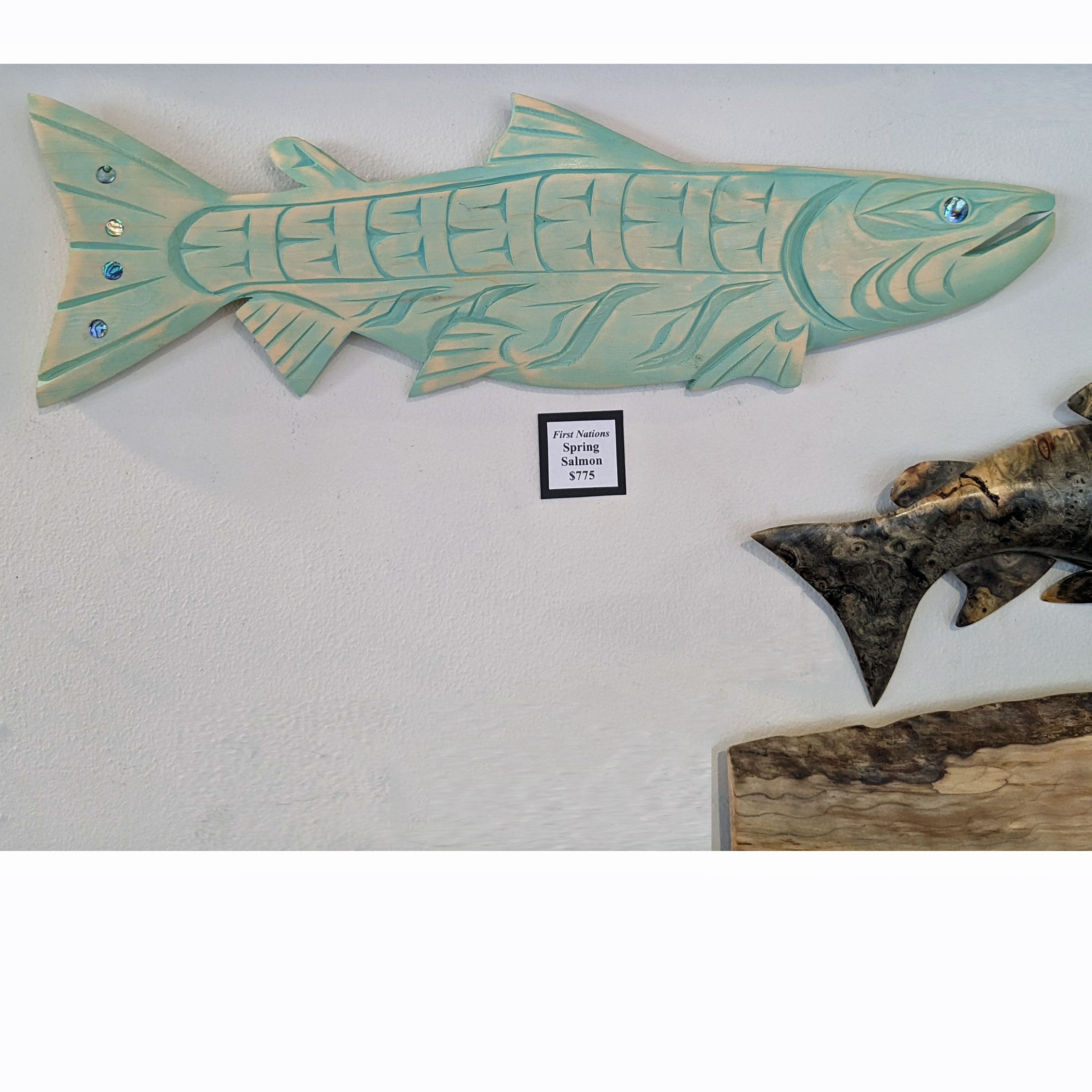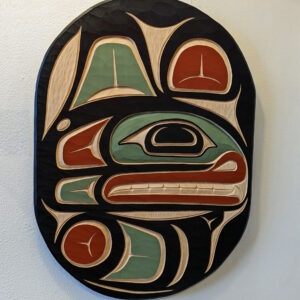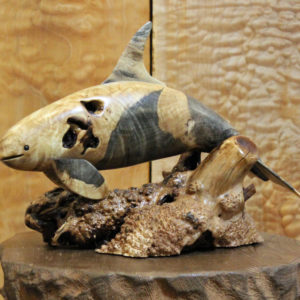Loggerhead Shrike Carving
$2,500.00
Loggerhead Shrike is painstakingly hand-carved and painted by a masterful carver. Many hours went into creating this lifelike bird. Realistic carved Shrike is perched cleverly atop a branch, suitable for freestanding tabletop display or for hanging display. Measures approximately 23 x 11 x 11 inches overall, including bird and branch. Bird alone measures around 9 inches from beak to tail tip. Priced at $2500.
In open terrain, this predatory songbird watches from a wire or other high perch, then pounces on its prey: often a large insect, sometimes a small bird or a rodent. The Loggerhead is gradually disappearing from many areas, for reasons that are poorly understood. It may be related to pesticides, drought, and/or changes in habitat. Loggerhead Shrikes have large, blocky heads and a thick bill with a small hook. Small food items are eaten quickly but when larger prey is caught, they are famous for cleverly impaling items on thorns or barbed wire to be eaten later.
About Creating Realistic Carved Birds
Lifelike bird carvers are passionate about showing the important breed identification markings, and also to capture the beauty of the bird.
Wildfowl wood carving can trace its roots to the Native American practice of weaving duck decoys from reeds. Sport hunters learned this approach, and by the 18th century began using decoys made from softwoods like cedar and pine. Around the turn of the 20th century, some carvers started making decoys for display, not utility, and collectors began to take notice. Carving’s artistic value grew further when the Migratory Bird Treaty Act of 1918 banned commercial hunting of migratory birds, reducing demand for decoys as practical tools.
To carvers and collectors, the pieces are works of art—vibrant sculptures that showcase the splendor of birds, while many people view carving as a life-science craft, a kind of wooden taxidermy. The art form has truly blossomed over the decades. Many works straddle the line between fine art and craft.
Nowadays, the craft has a different calling: conserving at-risk species around the world. Many seabirds, including puffins and albatross, don’t like nesting alone—so managers use decoys to seed new colonies, coaxing the birds into nesting around their statuesque neighbors. It’s just the sort of thing the early carvers would have appreciated: birds of wild feather and sculpted wood, flocking together.
This method is called “social attraction” and has taken off as a vital conservation tool to attract seabirds to empty sites. By deploying decoys, other social lures, such as sound systems blaring bird calls and mirror boxes that create the illusion of a larger group, can be used to bring birds to diminished, abandoned, or novel seabird colonies. Researchers around the world have used these methods to protect or restore more than 45 different seabird species in 120 restoration projects.









